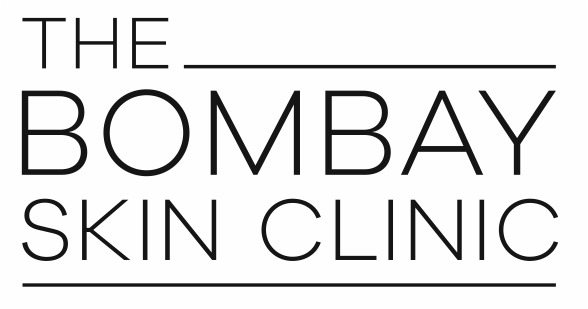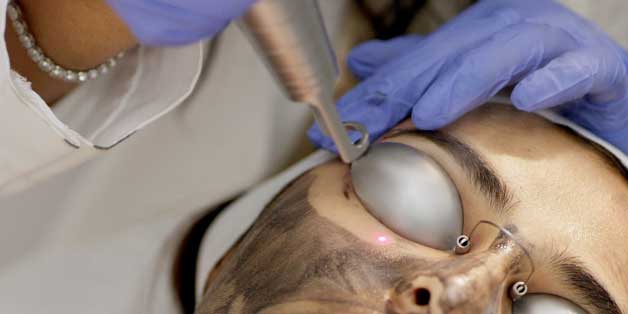Overview | Types of laser resurfacing treatments | What to expect during the procedure | What to expect after the procedure | Benefits of laser resurfacing
Nothing takes its toll on your skin like time, especially if you have to spend the better part of your days outside. Aging, sun exposure, and acne can leave you with fine lines, wrinkles, scars, and dark spots. While it can make your skin appear older and dull, you do not have to continue living with it.
Laser treatment for skin, or laser resurfacing, is an effective procedure for restoring your skin’s youthfulness and health. The procedure for the treatment is cutting-edge and effective.
There are different types of laser resurfacing treatments offered depending on the depth of the condition.
What are the types of laser resurfacing treatments?
Ablative laser resurfacing
This laser resurfacing process involves treatment of the entire skin. It is performed using the Carbon Dioxide (CO2) laser treatment to remove the entire outside layer of your skin. Using this procedure, scars, deep wrinkles, and warts can be removed.
The procedure offers multiple benefits, including:
- Minimizing fine lines, acne scars, and sun damage
- Evening out skin tone
- Improving skin texture
- Stimulating collagen to make skin youthful and healthy
- Minimizing downtime
Non-ablative laser treatment
This treatment procedure is more effective for skin of color, which is why I personally prefer this. The procedure can be used to treat pigmentation and acne scars while improving skin texture and glow.
Below are some of the non-ablative laser treatments that I favor.
Hollywood laser – This is a gentle treatment procedure, which involves carbon peeling. It rejuvenates the skin by lowering signs of aging and skin damage. The procedure evens skin tone, reduces skin pigmentation, treats fine lines, lowers acne scars, and make the skin appear younger.
MNRF – The Micro-Needle RF is an effective laser procedure for treating acne scars. It can also be used for skin rejuvenation and tightening. Microneedles are used to directly send controlled RF energy into your skin, which heats up the tissues, improving collagen production. It treats the skin damages and improves overall skin-health.
Pico laser – This is a short pulse laser treatment that is used to remove skin pigmentation and tattoos. With this procedure, it is easier to target the affected areas without causing any damage to the surroundings.
Erbium glass laser – When it comes to skin rejuvenation, this is one of the newest and most effective treatment procedures. The erbium glass laser is minimally invasive and practically has no side effects. The treatment reduces many signs of aging and makes the skin healthy overall.
The advantages of non-ablative lasers include:
- No downtime
- Removes skin damages caused by sun exposure
- Reduces wrinkles and fine lines
- Reduces skin redness
- Improves skin tone and texture
- Increases the production of collagen
Ideal candidates for ablative laser treatment
You are an ideal candidate for the procedure if you have wrinkles around your skin and sun damage. If you have loose skin and your skin tone changes frequently, the procedure can surely help. People with uneven skin due to scars and spots can also benefit from this treatment.
Ideal candidates for non-ablative laser treatment
If you want overall rejuvenation of the skin, acne removal, and texture improvement, this is the ideal procedure for you. Patients with dark skin can benefits most from the non-ablative laser treatments.
It is understandable if you are not sure about the safety of the procedure as laser treatment is still a developing technology; however, let me assure you that laser skin resurfacing is completely safe. Stanford Health Care informs that the procedure is not only safe, but also effective.
Who can opt for the laser treatments?
I personally recommend this treatment to patients who have tried everything else to treat their aging and unhealthy-looking skin without any positive result. Laser resurfacing is the best procedure if you have skin concerns such as:
- Scars
- Age spots
- Wrinkles
- Fine lines
- Acne scars
- Cow’s feet
- Irregular skin tone
- Sagging skin
- Warts
Your skin tone is one of the factors that determine if you are the right candidate for the treatment. Laser skin resurfacing is ideal for light skin as that ensures lower chances of developing hyperpigmentation. That does not mean the procedure is not effective on darker skin tones. At The Bombay Skin Clinic, I offer the expertise and resources for the best achievable result, irrespective of your skin tone.
However, if you have excessively sagging skin or acne breakouts, the procedure will not be safe for you. I also expect the patients to be overall healthy and ready to commit to the skincare routine I suggest.
How to prepare for laser skin resurfacing?
The very first step before the treatment is to determine if you are an ideal candidate for the treatment. If you are prone to acnes and cold sores, inform me about them beforehand. Laser treatment can cause further breakouts. I will prescribe the required medications to reduces the chances of any breakouts. I will also guide you on how to avoid any bacterial infection before or after the procedure.
I will check your medical history to determine if you have any other skin condition that may make the procedure riskier. I will also ask you about the medications you use regularly as consumption of certain painkillers and vitamin supplements have to be stopped 10 days before the procedure. If you are a smoker, I will suggest you stop smoking for 14 days before and after laser skin resurfacing as that can delay recovery. The National Health Service suggests that the procedure should be tested on a small area on the skin to check how it reacts. I will perform that if required.
What can you expect during the procedure?
The procedure largely depends on your requirements. If you want to treat only certain areas with wrinkles, lines, scars, or blemishes, I can target just those areas. I will use an aesthesia to numb only the targeted areas of the skin so you do not feel any discomfort. However, if the entire face requires laser resurfacing, sedation may be needed. Next, I will thoroughly cleanse the areas to remove any dirt or excess oil from your skin before starting the treatment.
Once your skin is prepared for the treatment, I will select which type of laser is suitable for your needs and slowly move the device on the affected areas. While the laser removes the skin’s outer later, it also starts healing the layers underneath to encourage collagen production. This is necessary to ensure that the resurfaced skin is healthier, firmer, and smoother.
It takes around 45 minutes to complete the procedure if I am only treating specific areas. However, to apply the procedure on your entire face, it may take as long as two hours. Once the procedure is completed, I will carefully bandage the treated areas to protect them from external irritants.
What can you expect after the procedure?
Laser skin resurfacing is an outpatient procedure; hence, you can go back home after it is completed. 24 hours after the treatment, you need to clean the treated areas up to five times a day. You may have some swelling after the laser treatment, which is entirely normal. I will prescribe you required ointments to keep the swelling under control and ensure that scabs do not form.
Your skin might sting or itch for around three days after laser skin resurfacing treatment, and you can also expect it to start peeling and become dry within a week. It can take up to three weeks for the skin to properly heal. You may still notice some redness on the treated areas, which typically takes around three months to completely subside. It is acceptable to wear makeup to cover the redness as long as the product is oil-free.
The new layer of skin is generally more sensitive and lighter than user. To protect it from direct exposure to sun’s ultraviolet rays, you must use a high-quality sunscreen product. A broad-spectrum sunscreen with an SPF of 30 or more should be enough to save your skin from sun damage. You will have to reapply the sunscreen product every two hours and use additional protection like full-sleeved clothing and a hat with wide-brims. You must also keep the skin well-moisturized. I will help you choose the right moisturization product, depending on your skin type and needs.
When the laser skin resurfacing procedure is effective, the result may sometime vary depending on your skin condition and type.
What are the benefits of laser skin resurfacing?
Laser skin resurfacing is safe and effective. It has some significant benefits that make the procedure a great option for anyone considering skin rejuvenation. Among its benefits, the three major ones include:
- Time saving – One of the best things about the procedure is its time-saving quality. Depending on your requirements, it may take up to only two hours, and you can return home immediately once the procedure is completed. This surely makes it a convenient treatment option, irrespective of how busy your schedule is.
- Incredible outcome – The American Academy of Dermatology assures that it is possible to treat sun-damaged skin with laser resurfacing. The treatment offers incredible results as it completely removes the damaged layers, and all the blemishes and wrinkles along with it. Once the new layer of skin is resurfaced, you get the expected result. The new skin will appear healthy and firm, offering you a youthful appearance. The laser device’s heat also helps improve collagen production, which is necessary to make your skin tighter and less saggy. You will also get your spotless youthful glow back with an even skin tone.
- Permanent result – Unlike most other skin treatment procedures and products, laser skin resurfacing may offer you permanent solutions. When your old and damaged skin layer is removed and replaced by a healthier, younger layer, it becomes possible to maintain the appearance permanently. It will require maintaining a healthy skincare routine, and I can help you with that, too.
Are there any risks or side effects of laser skin resurfacing?
Even though this procedure is relatively safe, laser skin resurfacing has a few possible side effects like any other cosmetic procedure. These include:
- Bumps
- Burns
- Swelling
- Rash
- Hyperpigmentation
- Infection
- Redness
- Scar
However, it is possible to avoid these side effects if you follow the pre-treatment and post-treatment care procedures as per my instructions. You will have to avoid direct exposure to sun and places where you can get an infection. Even if you do experience some of the side effects, they do not last too long.
What are the questions to ask before opting for the treatment?
I always encourage my patients to clear any doubts they have before deciding to get the laser skin resurfacing treatment. Some of the common questions I aim to answer are:
- Am I a good candidate for the treatment?
- What should I do to get the best result?
- How will you perform the procedure?
- Where will you perform it?
- What kind of result can I expect?
- Will I have to stay in the clinic overnight?
- What risks are involved with the procedure?
- What kind of recovery period it needs and how will my skin appear after the treatment?
- What kind of skincare routing will I have to follow?
Closing thoughts
I understand how heartbreaking it can be to appear older than your age. The fine lines and other signs of aging can do serious damage to your confidence, too. However, in today’s day and age, you do not have to continue living with it. In my clinic, I offer laser skin resurfacing treatment, which will help you get your youthful, healthy, and glowing skin back. With my assistance, you can say goodbye to aging skin!
References
- Stanford Health Care: https://stanfordhealthcare.org/medical-treatments/l/laser-treatments.html
- National Health Service: https://www.nhs.uk/conditions/cosmetic-procedures/skin-lightening/
- American Academy of Dermatology: https://www.aad.org/public/everyday-care/sun-protection/sun-damaged/wrinkles-sun-damage-can-be-treated


 Dr. Batul Patel is a celebrity dermatologist and the medical director of The Bombay Skin Clinic an award winning clinic located in South Mumbai & Bandra. She is a passionate and dedicated dermatologist with expertise in all fields of dermatology, trichology and aesthetic dermatology. She has been practicing for more than a decade. Her range of expertise include emsculpt NEO, coolsculpting, fillers, acne treatment, lasers, skin rejuvenation, hair loss, hair transplant, PRP & pigmentation treatments.
Dr. Batul Patel is a celebrity dermatologist and the medical director of The Bombay Skin Clinic an award winning clinic located in South Mumbai & Bandra. She is a passionate and dedicated dermatologist with expertise in all fields of dermatology, trichology and aesthetic dermatology. She has been practicing for more than a decade. Her range of expertise include emsculpt NEO, coolsculpting, fillers, acne treatment, lasers, skin rejuvenation, hair loss, hair transplant, PRP & pigmentation treatments.